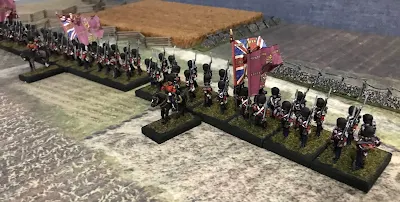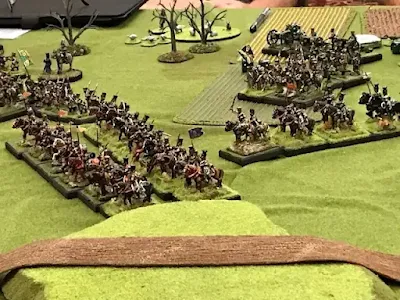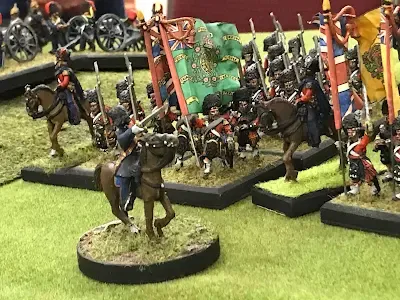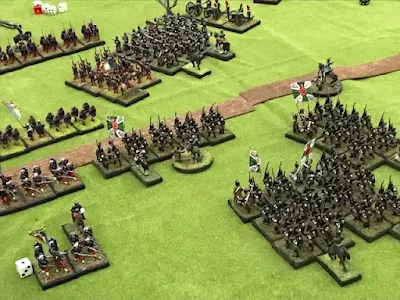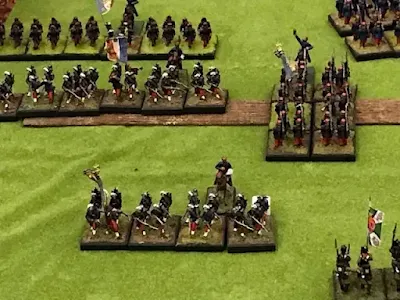General Charles Lee was one of those characters I think the Muses added to help make things interesting for historians. Charles Lee had a long history of military service with both the army of Great Britain as well as other European services. Believing he had not been recognized for his achievements and superior ability he emigrated to the colonies and later he threw his lot in with the "rebels." Considered second only to Washington in the early stages of the war he was admired and held in high regard. This of course fed his enormous ego and he insisted on explaining how to do things correctly to everyone, no matter if they were listening or not. While he did add a number of important administrative suggestions his actual military accomplishments were few and very questionable. One point no one questioned was his erratic behavior and his ability to alienate almost everyone he came in contact with. He was always followed by a pack of dogs who's company he said he preferred to people.

During the New York campaign he started to criticize Washington's actions. On the race across New Jersey he not only kept his command separated from Washington's army but continued to ignore Washington orders. This came to a head on the afternoon of 2 December 1776 when Lee yet again ignored Washington's order to march his army to unite the commands. Instead he went to a tavern about three miles outside his lines near Morristown NJ. He stayed that evening at the Widow White’s Tavern (named after Ebenezer White’s wife Mary Brown White). With him, he took his aide, Major William Bradford, two French volunteer officers, and fifteen guards who situated themselves around the building. Latter that evening, Major James Wilkinson, General Horatio Gates’s aide, rode to White’s Tavern with a dispatch for Lee from his superior. Curiously James Wilkinson was later strangely silent about the following events. The question if why Charles Lee felt the need to go and stay at the Widow White's tavern, three mikes outside his troops lines with such a minor guard has perplexed and confounded historians to thus day.

While this was happening Lieutenant Colonel William Harcourt, Cornet Banastre Tarleton, and thirty dragoons of the 16th Light Dragoons had left General Charles Cornwallis’s headquarters and rode to Hillsborough on a intelligence gathering mission. There they either captured a dispatch rider or were informed by a local Tory that General Lee was nearby. Galloping to the White Tavern Harcourt surrounded the building while Tarleton captured the guard. They called on Lee to surrender. While this was going on Lee was finishing breakfast and dictating a response to Wilkinson for Gates. His response was an attack on Washington: “… entre nous [between us], a certain great man is damnably deficient—He has thrown me into a situation where I have my choice of difficulties—if I stay in this Province [New Jersey] I risk myself and army and if I do not stay the Province is lost forever … unless something which I do not expect turns up we are lost—our counsels have been weak to the last degree….”
Early on the morning of 3 December 1776 his breakfast and letter writing was interrupted by gun shots. Bradford, Wilkinson, and one of the Frenchmen made their escape during the confusion. Lee, however, would not be so fortunate. After surrendering himself to Harcourt, he was taken to New York City for confinement. He would not be paroled and returned to the Continental Army for nearly sixteen months. In one of history's interesting twists Lee had served as an officer in the 16th Light Dragons during the Seven Years War. One of his subordinates was William Harcourt.

During that time There was great debate within the British high command over Lee's status. Had he resigned his half pay British commission? Was he to be treated as a prisoner or a turn coat? It was later decided to just ignore it. While confided Lee drew up and submitted a plan to General Howe with advice on how to defeat the rebel colonists!! While debated by historians on how serious this was it was typical Lee. He was later exchanged for British General Prescott and returned to Washington in early 1779.
The army he returned to was much different then and Lee was no longer considered second only to Washington. His conduct during the Monmouth campaign is much debated to this day. For his actions that day he demanded a Court Marshall to clear his name. Instead he was found guilty of misconduct. Lee was suspended from the army for a year.


Lee continued to argue his case and rage against Washington to anyone who would listen. This prompted both Lieutenant Colonel John Lauren and Steuben to challenge him to a duel. Only the duel with Laurens actually transpired, during which Lee was wounded. In 1780, Lee sent such a insulting letter to Congress that it terminated his service with the army. After some travels and finding himself in debt he was forced to sell what properties he owned. While visiting Philadelphia he was stricken with fever and died in an inn on 2 October 1782.
Contrarian to the end his will denounced religion and forbade burial near a church or religious meeting house. Against these instructions his remains were taken to the City Tavern for friends and dignitaries to pay their respects, A small military escort took his remains to Christ Church, where after a brief Anglican service, Lee was buried in the churchyard in an unmarked grave. Thus ends the curious tale of Charles Lee.
My command figure of General goes with his division of McDougal' s and Glover's brigades in 1776. The future us from Brigade Games miniatures. Like his period engraving Lee wears a round hat rather then the standard military cocked hat. His uniform us blue coat faced buff in imitation if the uniform Washington wore. His rank us marked by the pink ribbon across his chest. His ADC is marked by a green ribbon. Surrounding him us his ever present dogs.






